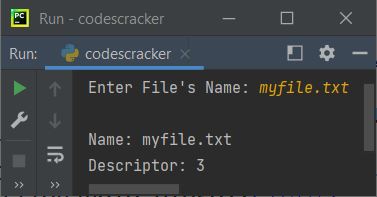- Python Built-in Functions
- Python All Built-in Functions
- Python print() Function
- Python input() Function
- Python int() Function
- Python float() Function
- Python len() Function
- Python range() Function
- Python str() Function
- Python ord() Function
- Python chr() Function
- Python ascii() Function
- Python pow() Function
- Python type() Function
- Python List Functions
- Python list() Function
- Python insert() Function
- Python append() Function
- Python extend() Function
- Python pop() Function
- Python remove() Function
- Python reverse() Function
- Python sort() Function
- Python sorted() Function
- Python Dictionary Functions
- Python dict() Function
- Python update() Function
- Python get() Function
- Python keys() Function
- Python setdefault() Function
- Python fromkeys() Function
- Python items() Function
- Python popitem() Function
- Python Tuple Function
- Python tuple() Function
- Python Set Functions
- Python set() Function
- Python frozenset() Function
- Python String Functions
- Python split() Function
- Python join() Function
- Python format() Function
- Python replace() Function
- Python Iterator Functions
- Python iter() Function
- Python min() Function
- Python max() Function
- Python sum() Function
- Python count() Function
- Python index() Function
- Python copy() Function
- Python clear() Function
- Python next() Function
- Python filter() Function
- Python enumerate() Function
- Python zip() Function
- Python reversed() Function
- Python Number Functions
- Python abs() Function
- Python bin() Function
- Python oct() Function
- Python hex() Function
- Python round() Function
- Python divmod() Function
- Python complex() Function
- Python File Handling Functions
- Python open() Function
- Python read() Function
- Python readable() Function
- Python readline() Function
- Python readlines() Function
- Python write() Function
- Python writable() Function
- Python writelines() Function
- Python close() Function
- Python seek() Function
- Python tell() Function
- Python flush() Function
- Python fileno() Function
- Python truncate() Function
- Python Class Functions
- Python object() Function
- Python property() Function
- Python getattr() Function
- Python setattr() Function
- Python hasattr() Function
- Python delattr() Function
- Python classmethod() Function
- Python staticmethod() Function
- Python issubclass() Function
- Python super() Function
- Python Misc Functions
- Python all() Function
- Python any() Function
- Python isatty() Function
- Python bool() Function
- Python callable() Function
- Python globals() Function
- Python locals() Function
- Python dir() Function
- Python id() Function
- Python isinstance() Function
- Python map() Function
- Python repr() Function
- Python slice() Function
- Python vars() Function
- Python Advance Functions
- Python help() Function
- Python hash() Function
- Python breakpoint() Function
- Python bytes() Function
- Python bytearray() Function
- Python memoryview() Function
- Python compile() Function
- Python eval() Function
- Python exec() Function
- Python Tutorial
- Python Tutorial
- Python Examples
- Python Examples
Python fileno() Function
The fileno() function in Python, used to get the file descriptor of the stream, in an integer form. That is, the fileno() function returns an integer value of the file descriptor assigned to the file object.
Python fileno() Syntax
The syntax to use fileno() function in a Python program is:
file_object.fileno()
where file_object referred to the file handler or object.
Python fileno() Example
Let's create an example program, demonstrating the fileno() function. The file say codescracker.txt must be available inside the current directory. Otherwise the program raises an error. Therefore, create the file, before executing the program given below.
filehandle = open("codescracker.txt", "r") val = filehandle.fileno() print("Integer Value of File Descriptor is", val) filehandle.close()
Since the file codescracker.txt is available in the current directory in my case. Therefore, here is the output produced by above program:

Since the opening mode used in above program is r, therefore the file must has to be available in the current directory. Otherwise the program will throw or raise an error. But you can also change the mode from r to w to avoid any error, while printing the integer value of the file descriptor, as done in previous program. Here is the modified version of previous program:
print("Enter File's Name: ", end="") filename = input() fileobject = open(filename, "w") print("\nName:", fileobject.name) print("Descriptor:", fileobject.fileno()) fileobject.close()
Here is its sample run with user input myfile.txt as name of file:

Note: The w mode used as opening mode of the file means, if the file does not exists, then a new file gets created with same name provided using user input.
Note: The end parameter skips insertion of an automatic newline using print() function.
« Previous Function Next Function »